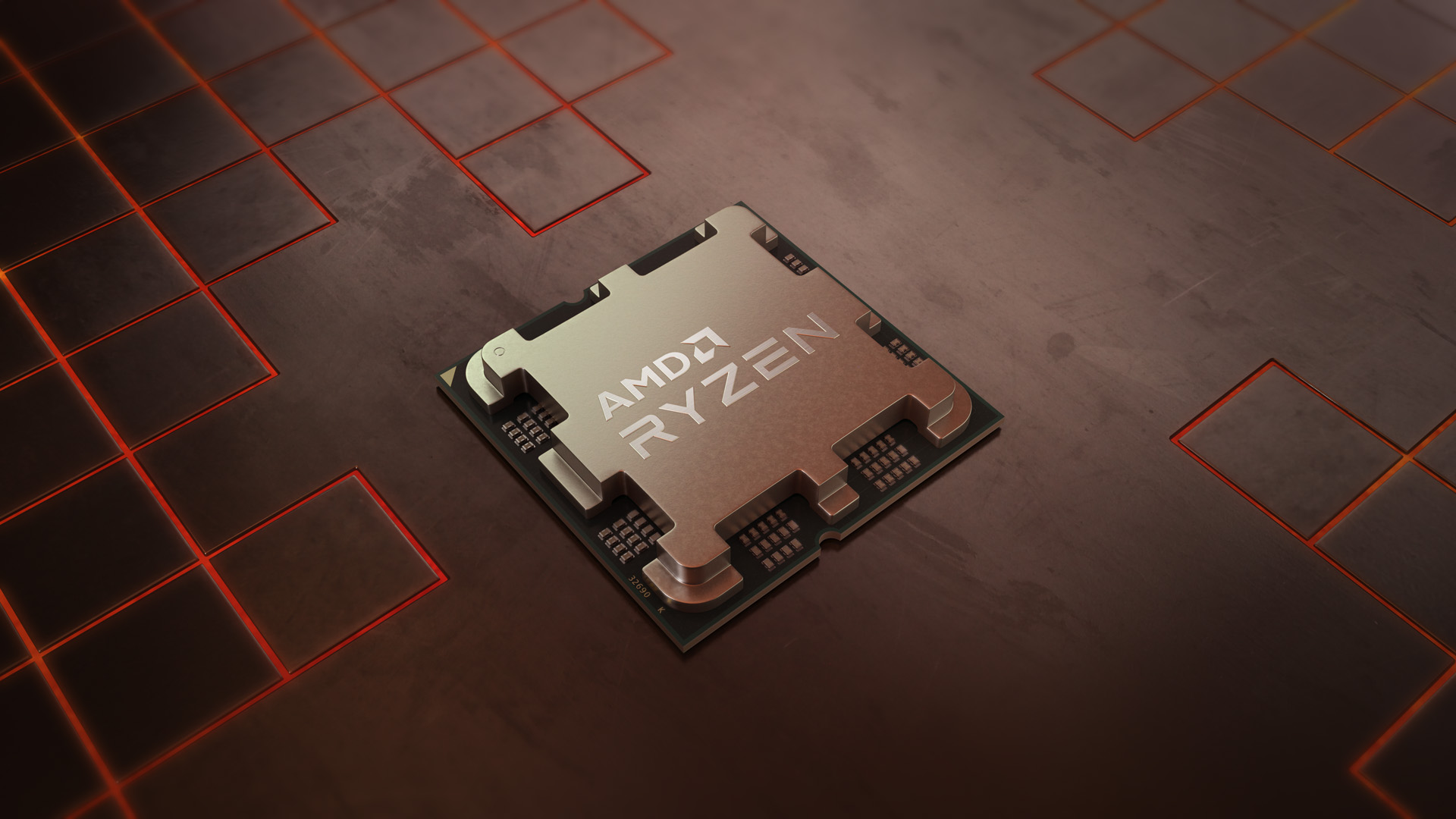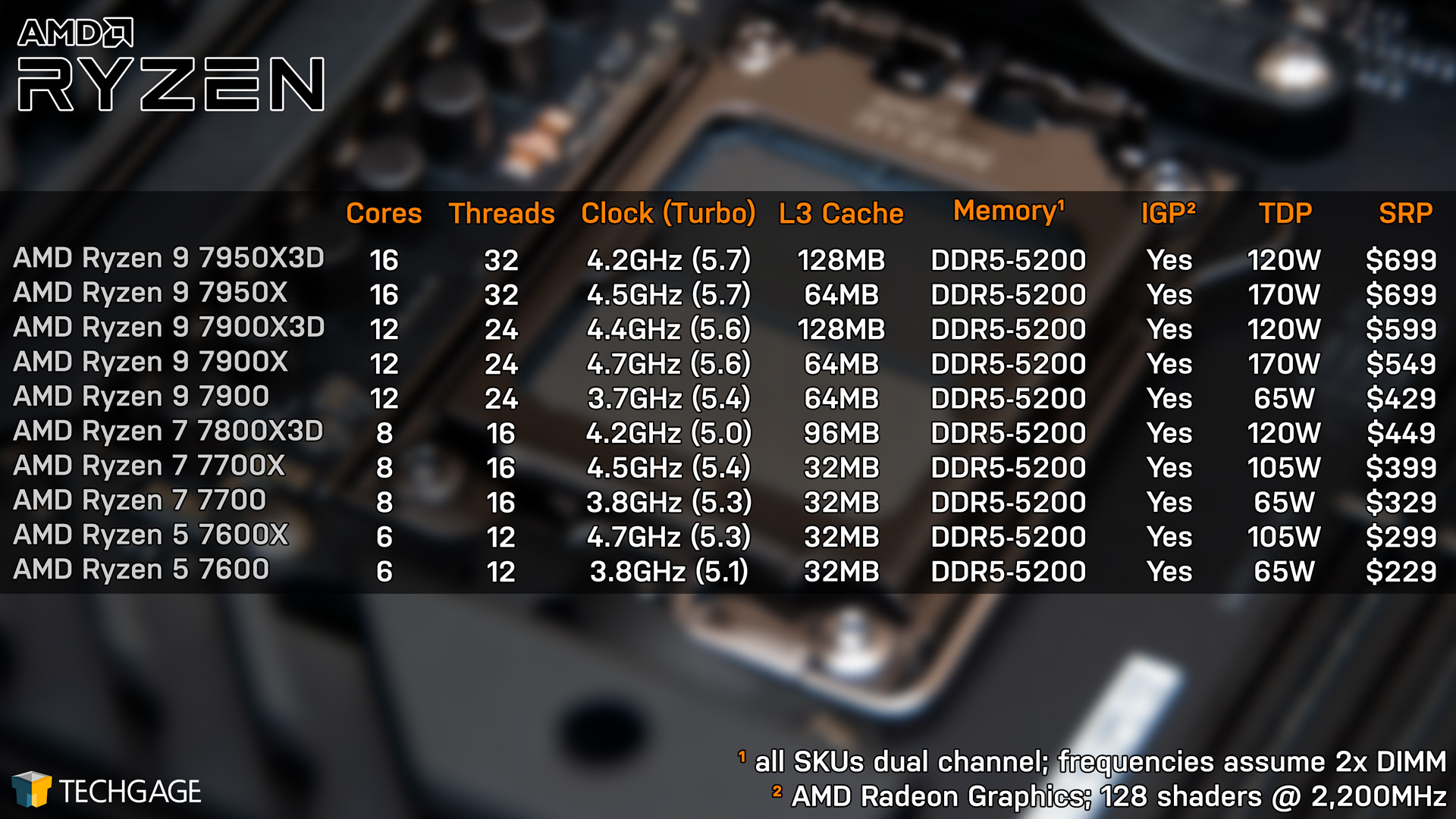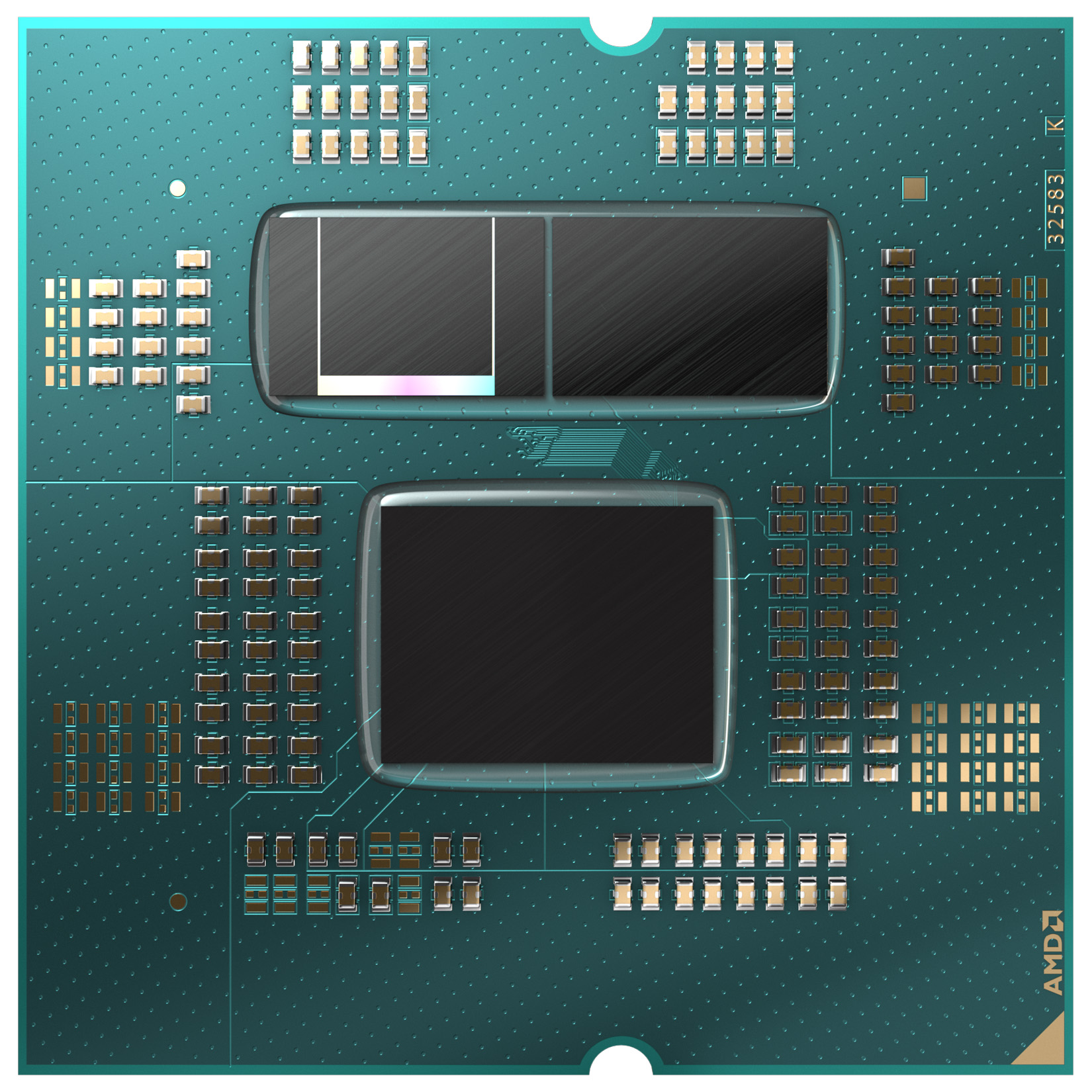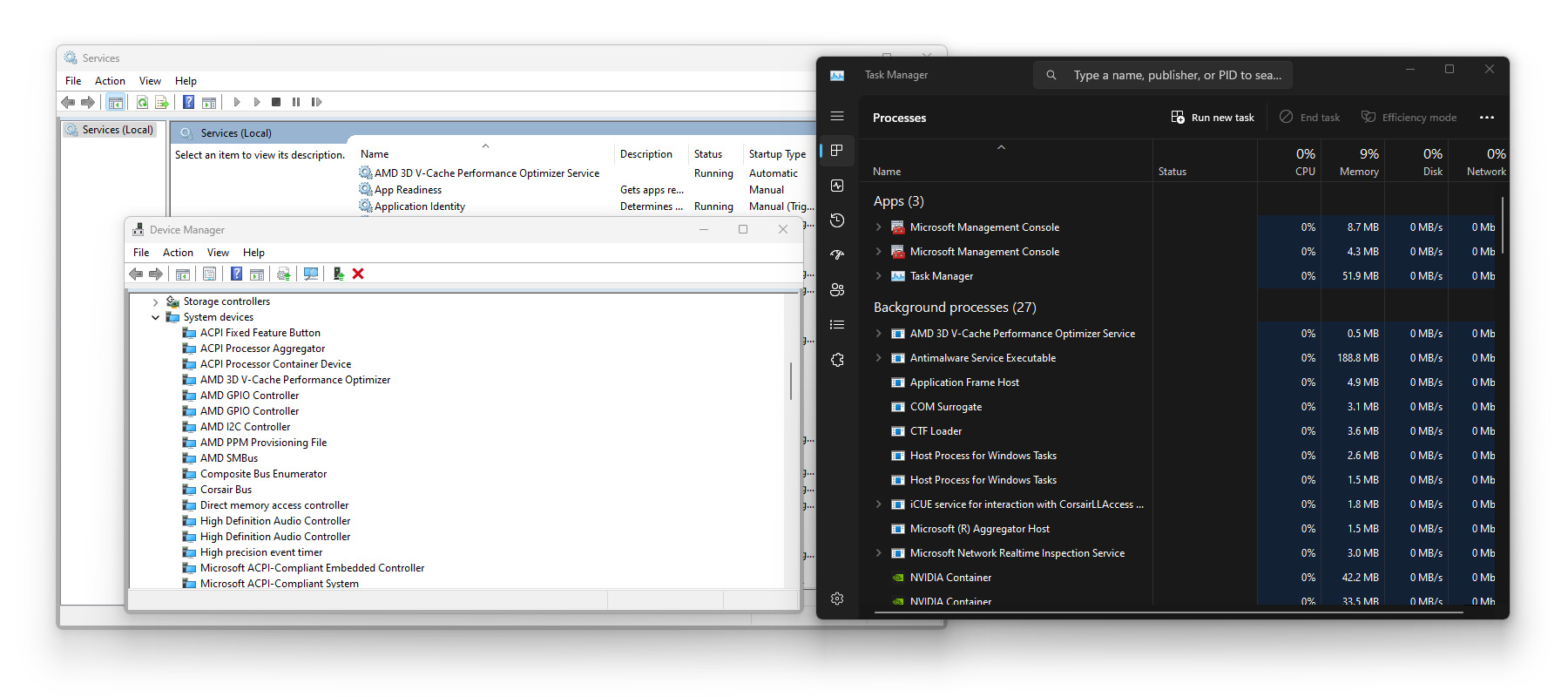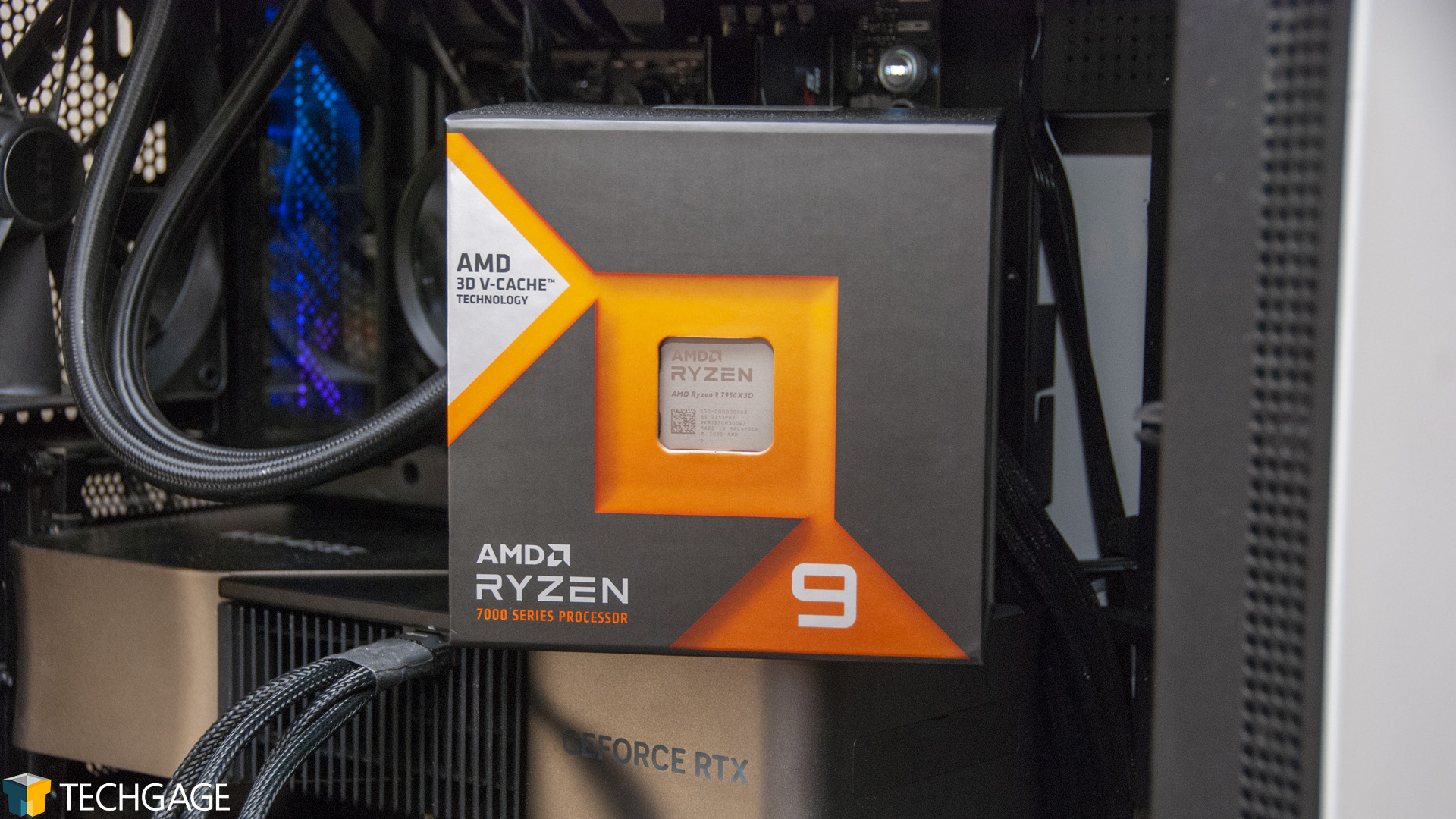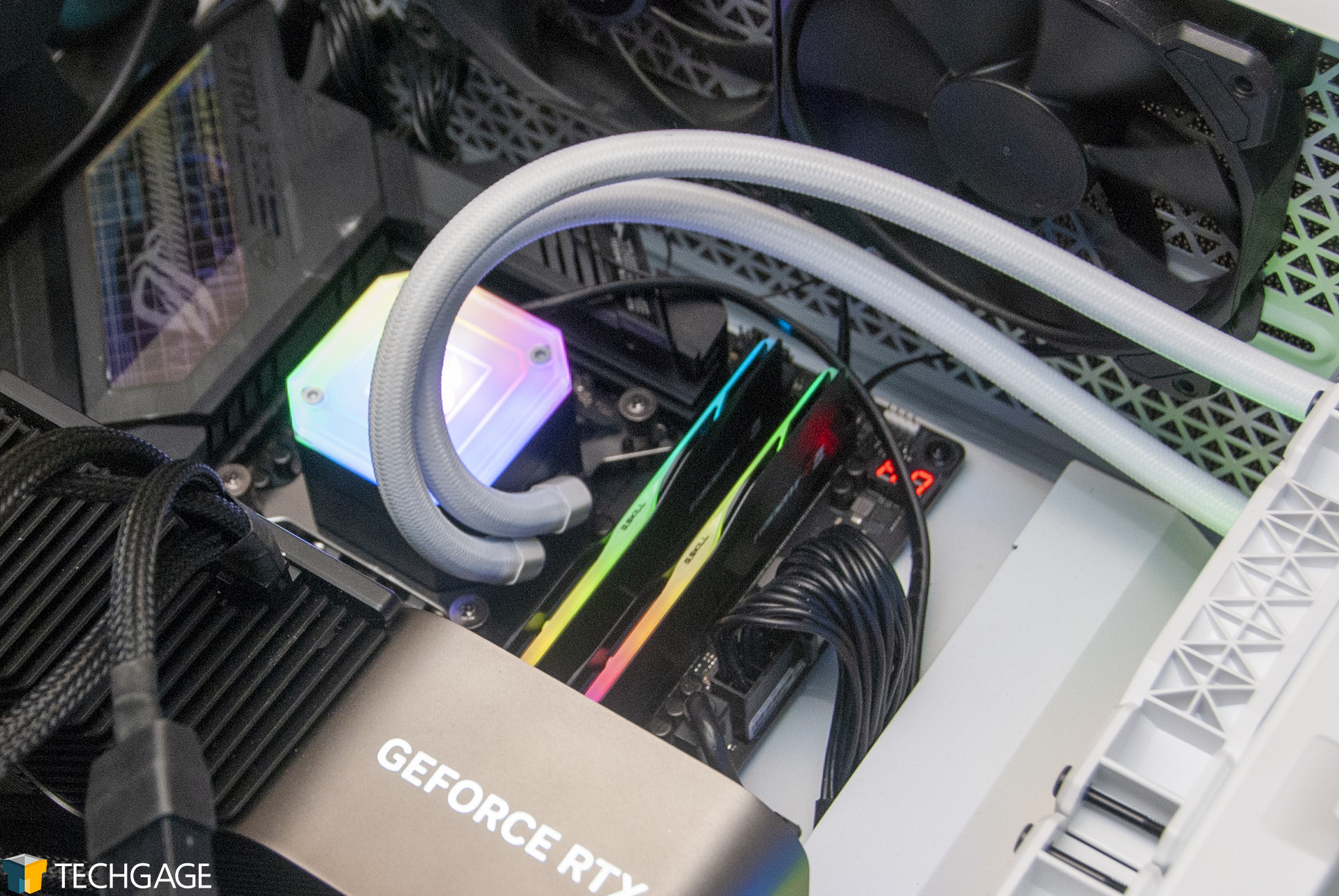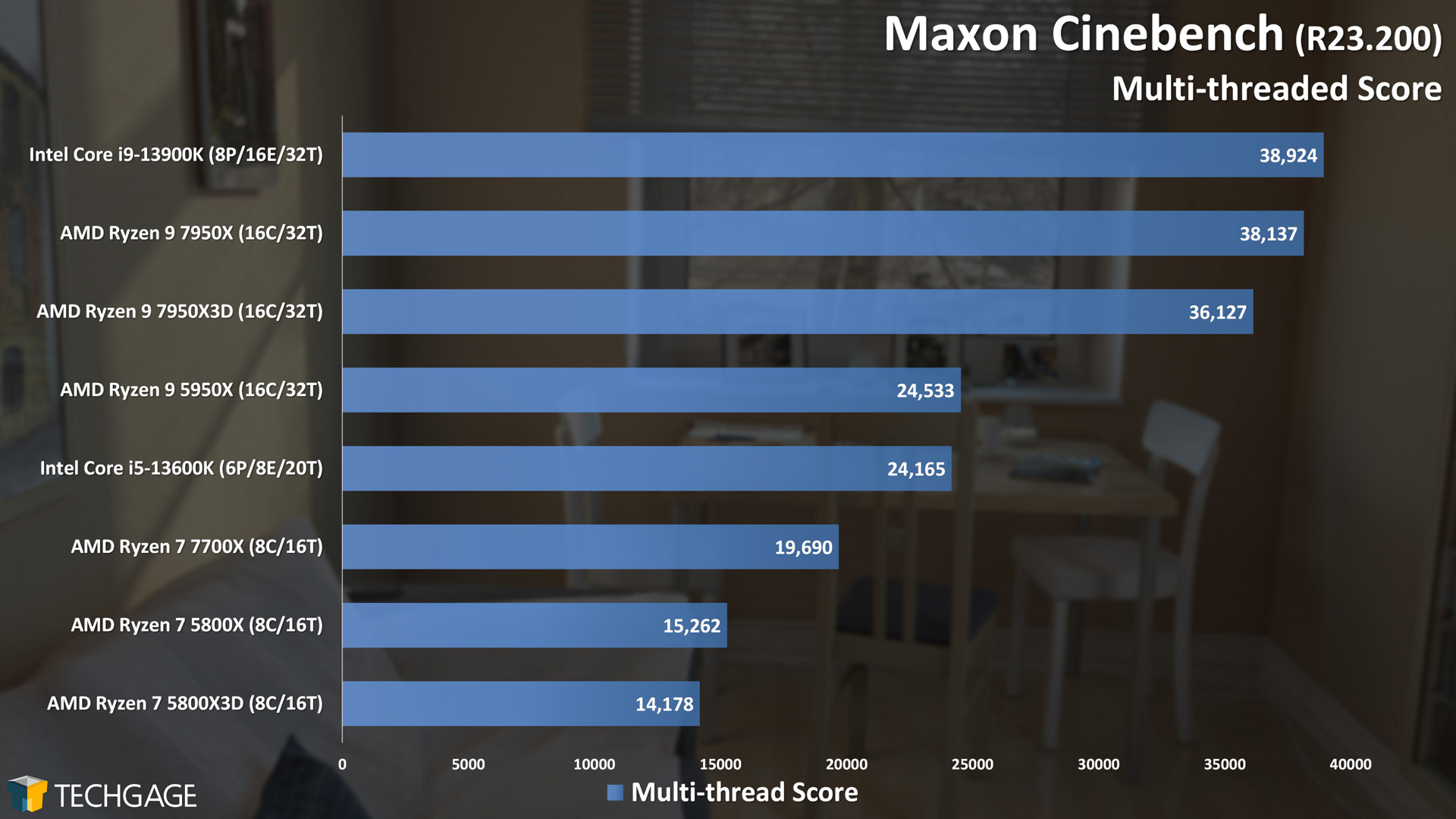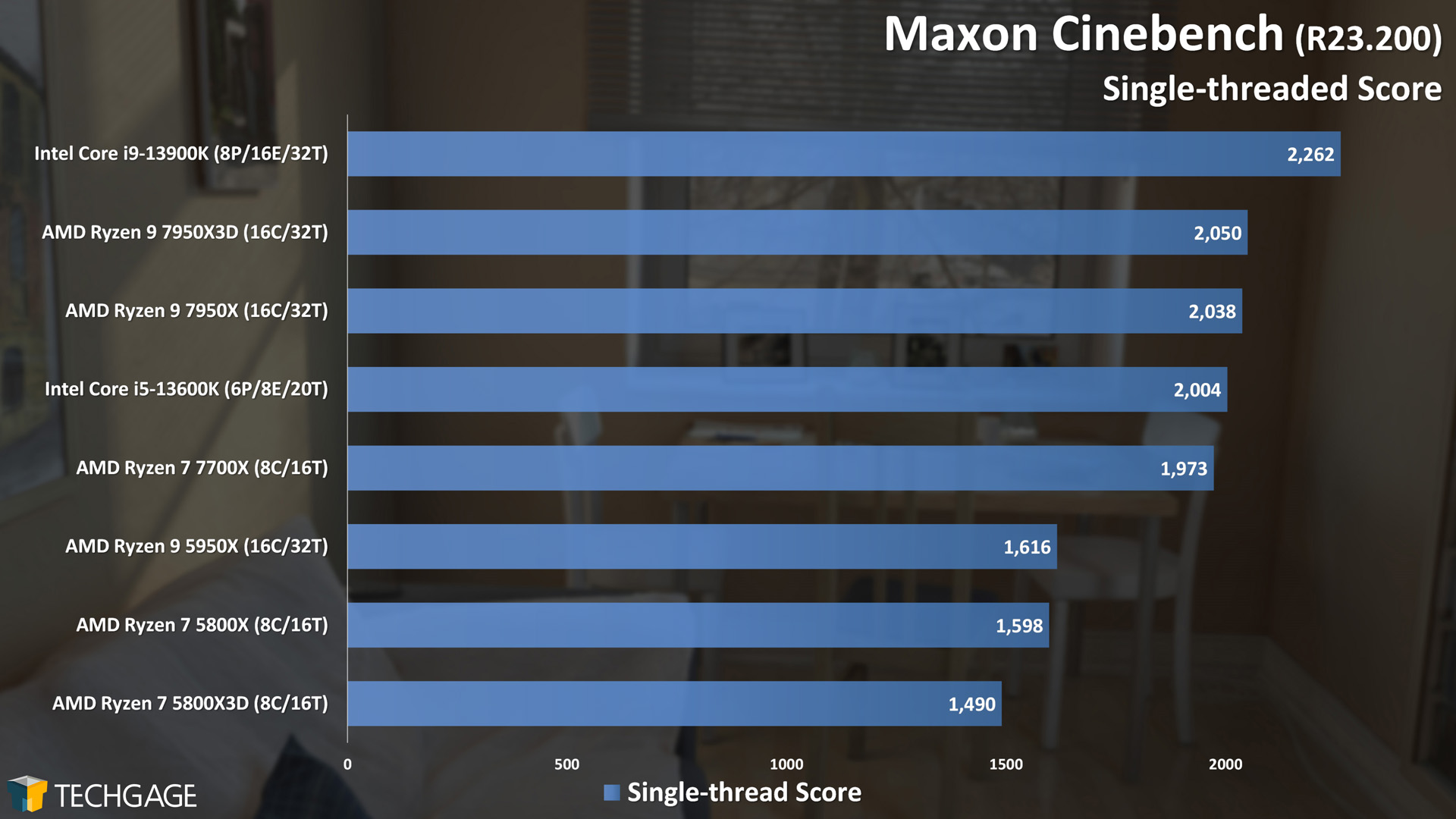- Qualcomm Launches Snapdragon 4 Gen 2 Mobile Platform
- AMD Launches Ryzen PRO 7000 Series Mobile & Desktop Platform
- Intel Launches Sleek Single-Slot Arc Pro A60 Workstation Graphics Card
- NVIDIA Announces Latest Ada Lovelace Additions: GeForce RTX 4060 Ti & RTX 4060
- Maxon Redshift With AMD Radeon GPU Rendering Support Now Available
3D V-Cache Infused Zen 4: AMD Ryzen 9 7950X3D Gaming Review
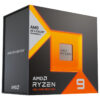
AMD’s first Zen 4 processors featuring 3D V-Cache technology have landed, and with a focus squarely on gamers, we’ve been eager to see how 3D V-Cache elevates AMD’s Zen 4, and not to mention how it performs against the Intel competition. With the 16-core 7950X3D and thirteen games in-hand, let’s explore what AMD’s latest and greatest gaming CPU can pull off.
Page 1 – Introduction, Test Systems & Cinebench Scores
For a look at AMD’s Zen 4 and Intel’s Raptor Lake CPUs in creator workloads, check out our recent in-depth look.
When AMD released its first 3D V-Cache processor with the Ryzen 7 5800X3D, we were left impressed with the level of gaming performance that could be gained with a doubling of cache, and it became obvious that the design would lead to more cache-rich models from both AMD and Intel down-the-road.
This month, AMD rolled out the first two Zen 4-based models that have 3D V-Cache augmentation: a 16-core Ryzen 9 7950X3D and 12-core Ryzen 9 7900X3D. The third option, an 8-core Ryzen 7 7800X3D, is due soon.
We hoped to have had this review published weeks ago, but issues (our fault) plagued the first round of testing. We fine-tuned testing methods, and retested the same chips a second time. This review emphasized to us that CPU-bound gaming benchmarking is some of the most tedious there is. Comparing one GPU to another in gaming is almost dead simple in comparison. CPU-bound gaming testing is really sensitive, and more than the usual number of runs need to be executed to deliver a high level of confidence in the results.
In this review, we have a mix of new and old game titles, to see how a chip like the 7950X3D can benefit gaming performance overall. As was the case with the 5800X3D, high-resolution gamers should opt for a CPU without 3D V-Cache, because the gaming benefit is almost nonexistent above 1440p. Even 1440p can deliver underwhelming results at times – some of which can be seen later.
Before going further, here’s a quick look at AMD’s current-gen Zen 4-based processor lineup:
Despite the fact that AMD’s doubled the available cache in the top-end 3D V-Cache SKUs, continued optimization of the architecture since the original Zen 4 launch has led to these newer chips requiring much less power. It also helps that the 3D V-Cache chips tend to be clocked a bit lower, but that’s not enough to see 50W being shaved off of the TDP. Optimizations like these are always great to see.
Because of the 3D V-Cache infusion, the 7950X3D and 7900X3D enjoy a doubling of L3 cache, from 64MB to 128MB, while the 7800X3D triples the L3 cache over the 7700X, from 32MB to 96MB.
For AMD, it’s easier to augment just one CCD (CPU die; 1 for 8-core and under chips, 2 for higher than 8-core) with lots of cache than both, so the 7900X3D and 7950X3D put all of that extra cache alongside one CCD. The 7800X3D, meanwhile, is just one CCD, so implementation and OS-awareness is a little more straight-forward.
Because of the exotic design of the 7900X3D and 7950X3D, Windows needs updated bits in order to ensure that gaming is taking place on the CCD with the extra cache. To help make sure that happens, AMD’s newest chipset software installs an applet which directs gaming threads correctly. If you don’t have the chipset software (or this applet) running, you won’t be able to guarantee that your game will be running on the correct CCD.
In time, those who own either a 7900X3D or 7950X3D will need to do nothing other than update their EFI, Windows, and the AMD chipset driver. For now, users should additionally run the following code in a command prompt as Administrator to force the completion of background tasks.
start "" /wait Rundll32.exe advapi32.dll,ProcessIdleTasks
This could take tens of minutes, and ensures Game Bar is fully updated, as it too includes required optimizations for AMD’s 3D V-Cache chips.
It might also be worth mentioning that these new 3D V-Cache SKUs include integrated graphics just like the rest of the Zen 4 lineup. Considering the target audience of X3D chips, an IGP is going to be largely ignored, but it’s still nice to have one available just in case you’re suddenly left without a discrete GPU for whatever reason.
Something we do find a bit odd with this Radeon IGP is that Windows will try to automatically install a driver for it, even if the user doesn’t intend to use it. We’ve not experienced that kind of behavior with Intel’s CPUs, which have required explicit installation of the IGP driver. On AMD, this behavior complicated the LuxMark test in our recent creator performance deep-dive, as it was trying to use the IGP instead of the discrete GPU. Our fix was to simply uninstall the IGP driver Windows put there, and then configure the OS to stop automatically installing drivers.
Alright… let’s take a look at the test rigs, our methodologies, and Cinebench scores ahead of each CPU’s game test run. Uninterested? Hit up the next page instead.
Techgage’s CPU Testing Platforms
| AMD AM5 Testing Platform | |
| Processors | AMD Ryzen 9 7950X3D (4.2GHz, 16C/32T) AMD Ryzen 9 7950X (4.5GHz, 16C/32T) AMD Ryzen 7 7700X (4.5GHz, 8C/16T) |
| Motherboard | ASUS ROG CROSSHAIR X670E HERO 7700X and 7950X tested with 0922 BIOS (February 23, 2022) 7950X3D tested with 9922 BIOS beta (February 3, 2022) |
| Memory | G.SKILL Trident Z5 Neo RGB (F5-6000J3038F16G) 16GB x2 EXPO set to DDR5-6000 (30-38-38-96, 1.35V) |
| Graphics | NVIDIA RTX 4090 (24GB; GeForce 531.26) |
| Storage | WD Blue 3D NAND 1TB (SATA) Mushkin Gamma 2TB (Gen4 NVMe) |
| Power Supply | Cooler Master Silent Pro Hybrid (1300W) |
| Chassis | NZXT H710i Mid-tower |
| Cooling | NZXT Kraken X63 (280mm) |
| Et cetera | Windows 11 Pro 22H2 (22621) AMD Chipset Driver: 5.02.19.2221 |
| Intel LGA1700 Test Platform | |
| Processors | Intel Core i9-13900K (3.0GHz, 24C/32T) Intel Core i5-13600K (3.5GHz, 14C/20T) |
| Motherboard | ASUS ROG STRIX Z690-E GAMING WIFI CPUs tested with 2204 BIOS (November 30, 2022) |
| Memory | G.SKILL Trident Z5 RGB (F5-6000J3040F16G) 16GB x2 XMP set to DDR5-6000 (30-40-40-96, 1.35V) |
| Graphics | NVIDIA RTX 4090 (24GB; GeForce 531.26) |
| Storage | WD Blue 3D NAND 1TB (SATA 6Gbps) Mushkin Gamma 2TB (Gen4 NVMe) |
| Power Supply | Corsair RM1000x (1000W) |
| Chassis | Corsair 4000X Mid-tower |
| Cooling | Corsair H150i ELITE CAPELLIX (360mm) |
| Et cetera | Windows 11 Pro 22H2 (22621) Intel Chipset Driver: 10.1.19222.8341 Intel ME Driver: 2242.3.34.0 |
| AMD AM4 Test Platform | |
| Processors | AMD Ryzen 9 5950X (3.4GHz, 16C/32T) AMD Ryzen 7 5800X3D (3.4GHz, 8C/16T) AMD Ryzen 7 5800X (3.8GHz, 8C/16T) |
| Motherboard | ASRock X570 TAICHI CPUs tested with BIOS P5.01 (January 18, 2023) |
| Memory | G.SKILL FlareX (F4-3200C14-8GFX) 16GB x2 XMP set to DDR4-3200 (14-14-14-34, 1.35V) |
| Graphics | NVIDIA RTX 4090 (24GB; GeForce 531.26) |
| Storage | WD Blue 3D NAND 1TB (SATA 6Gbps) Mushkin Gamma 2TB (Gen4 NVMe) |
| Power Supply | Corsair RM850X (850W) |
| Chassis | Fractal Design Define C |
| Cooling | AMD Wraith Prism Air Cooler |
| Et cetera | Windows 11 Pro 22H2 (22621) AMD Chipset Driver: 5.02.19.2221 |
Testing Considerations
We use an up-to-date Windows for our testing, as well as the latest chipset driver for each respective platform. In the pursuit of accurate, repeatable benchmarks, here are some basic guidelines we follow:
- Disruptive services are disabled; eg: Search, Cortana, User Account Control, Defender, etc.
- Overlays and / or other extras are not installed with the graphics driver.
- Vsync is disabled at the driver level (and in any tested game or application).
- Default (usually Balanced) power profile is used (with screen and sleep timeouts disabled).
- OSes are never transplanted from one machine to another.
- We validate system configurations before kicking off any test run.
- Testing doesn’t begin until the PC is idle (keeps a steady minimum wattage).
- All tests are repeated until there is a high degree of confidence in the results.
- Only one game title is tested per OS boot to prevent phantom processes from interfering.
- We do not use outdated data. Performance numbers seen in this article are current.
Before each one of our tested processors went through the game test gauntlet, we ran Cinebench to gauge their overall potential:
Based on these rendering results, Intel’s Core i9-13900K looks mighty – but it is mighty enough to compensate for AMD’s cache buff? We’ll begin our investigation on the next page.
Support our efforts! With ad revenue at an all-time low for written websites, we're relying more than ever on reader support to help us continue putting so much effort into this type of content. You can support us by becoming a Patron, or by using our Amazon shopping affiliate links listed through our articles. Thanks for your support!




